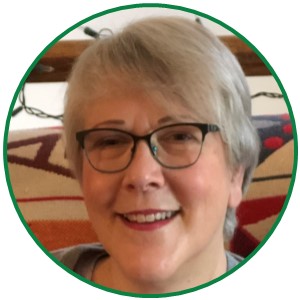| | | | The Intake Your Source for Collaborative News November 2020 | | | | | | | | Outreach Campaign in Full Swing | | A second round of postcards were sent to all landowners in Jefferson & Berkeley Counties that have properties greater than 20 acres in size within drinking water protection areas. This postcard featured local landowner Floyd Kursey who has a conservation easement on their family family in Hedgesville. The quotes on the back are from Floyd's landowner legacy video. | | | | | | These postcards follow an introductory postcard that was sent to the same landowner in October 2020. This outreach campaign is particularly important as it addresses the education & outreach components of Source Water Protection Plans (SWPP) of all of our local water utilities. For example, Charles Town Utility Board's SWPP seeks to "work with the County Extension Service, the Soil and Water Conservation District, and/or the Natural Resource Conservation Service to raise awareness about and promote participation in forest conservation, land retirement and nutrient management programs within the SWPA.” View these maps that show campaign reach by water utility: Berkeley County PSWD (163), Charles Town Utility Board (154), City of Martinsburg (208), Harpers Ferry Water Works (161), Jefferson Utilities Inc. (94), and Shepherdstown Water and Sanitary Board (103). | | | | Clint & Christina Hogbin Landowner Legacy Video Many thanks to local landowners Clint & Christina Hogbin for sharing their story! "I'm an eighth generation eastern panhandle resident, and we were looking for a way to give back to the area that had meant so much to our families history. We believed our property contained unique habitat. We believed, simply, it was a special place..." To hear the rest, watch the full video. As always, these videos are a collaborative effort with guidance and support from Susan Whalton with Land Trust of the Eastern Panhandle - thanks, Susan! | | | | | | | | In the News Partners from the Safe Water Conservation Collaborative were featured on a statewide television interview with Local DVM. (Unfortunately, the video didn't post - but you can read the story.) | | | | | | | | Around the Collaborative If you have exciting news, please let us know and we'll share with our partners in next month's edition. | | | | | | The Berkeley County Farmland Protection Board received a total of 14 applicants this year, including an applicant who received a postcard from the Safe Water Conservation Collaborative’s outreach campaign. Five of those applications are priority parcels in the Collaborative's prioritization model. If selected for funding by the BCFPB, applicants are contacted with an offer to proceed to acquire a conservation easement; should the applicants choose to move forward, the BCFPB would conduct a title search and survey in the effort to move toward closing. Mark Schiavone is the Executive Director of the BCFPB. | | | | The Jefferson County Farmland Protection Board currently is working to close four funded easements totaling 854 acres, two of which are slightly over 300 acres. Two are funded through the NRCS Regional Conservation Partnership Program (RCPP) which prioritizes applications that rank high for water resource protection. The JCFPB submitted applications for two 100-acre farms to NRCS and RCPP for the FY2021 funding cycle, and one 150-acre tract to the American Battlefield Protection Program. Liz Wheeler is the Executive Director of the Jefferson County Farmland Protection Board. | | | | The 2020 Potomac River Report Card finds that "for the first time in a decade, the Potomac River’s health grade has declined – slipping from a B to a B-." One of the river health indicators is "Land", as what happens on the land has impacts on water quality. Protecting lands through conservation easements continues to receive an A grade for exceeding goals, although the grade has declined for agricultural stewardship practices as more work is needed. Learn more here. Our local Potomac Conservancy contact is Emily Warner (full bio below). | | | | | | What's Happening A recap of recent & upcoming meetings, webinars, and more. - November 12 – Cadmus Group facilitated a strategic planning conversation to set workgroup-specific Objectives, based in part on a short set of "conversation starter" survey responses. The Workgroup loosely discussed ideas on a shared whiteboard, which Cadmus Group then edited into first draft Objectives for the Workgroup to review and finalize.
- November 24 – Education & Outreach Workgroup (drafting Objectives)
- December 1 – Education & Outreach Workgroup (outreach campaign review)
- December 2 – Stewardship Workgroup (drafting Objectives)
- December 17 – Steering Committee (review Objectives & define role)
| | | | Partner Spotlight Take a moment to learn about all the great people & organizations that are a part of our work. | | | | | |  | Monica Whyte is an Environmental Resources Specialist with the Bureau for Public Health and is a member of the Steering Committee. A branch of the WV Department of Health and Human Resources, the Bureau for Public Health consists of 130 various programs which “cover the lifespan from newborns to death certificates and from drinking water to emergency medical services”. The Bureau supports the protection and betterment of the health of all West Virginians. A key aspect of their work is to oversee the WV Source Water Assessment and Wellhead Protection Programs. | | |  | Emily Warner is the Senior Director of Land Conservation with the Potomac Conservancy and is a member of the Conservation Workgroup and the Outreach Committee. The Potomac Conservancy is a 501(c)(3) nonprofit organization dedicated to preserving land and water around the Potomac River. “Founded in 1993, we drive the region’s clean water movement by providing the tools that empower local landowners, activists, volunteers, partners, donors, and all river champions to lead the charge for clean drinking water, healthy lands, and safe access to the river.” Emily Warner oversees the Conservancy’s land protection and restoration programs. | | |  | Michael Lynn volunteers with Warm Springs and Sleepy Creek Watershed Associations in Morgan County and is a member of the Stewardship Workgroup. The Warm Springs and Sleepy Creek Watershed Associations restore stream banks, wetlands and riparian areas, monitor water quality, and provide education for watershed protection. Mike is a Supportive Ecological Designer with United Designers and "has designed, installed, and consulted on projects ranging in size from small scale urban permaculture food forests to farm-scale agroforestry systems." Mike also works in public safety and is a graduate student in ecological restoration. | | | | Quick Fact “Most pollutants result from nonpoint source pollution activities, including [sediment] runoff from agricultural lands, urban areas, construction and industrial sites…Researchers in the Piedmont of North Carolina found that grass and grass-forest filter strips were equally effective in removing sediments, reducing loads from 60 percent to 90 percent.” –Understanding the Science Behind Riparian Forest Buffers: Effects on Water Quality | | | | | | West Virginia Rivers Coalition
3501 MacCorkle Ave SE #129 | Charleston, West Virginia 25304
304-637-7201 | wvrivers@wvrivers.org | |  | | | | | | | | |